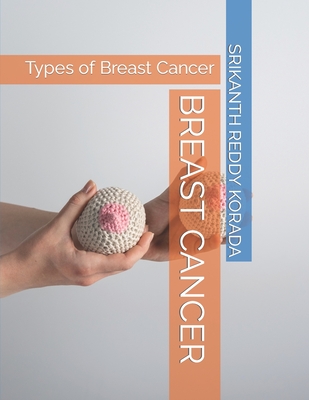You are here
Back to topBreast Cancer: Types of Breast Cancer (Paperback)
$30.99
Email or call for price.
Email or call for price.
Description
BREAST CANCER Description Breast cancer is a malignant (cancerous) condition that originates in the cells of the breast. It occurs when normal breast cells undergo abnormal changes and multiply uncontrollably, forming a tumor. These cancerous cells can invade nearby tissues and potentially spread to other parts of the body through the lymphatic system or bloodstream. Breast cancer can affect any part of the breast, including the milk ducts, lobules, or other breast tissue. Most commonly, it starts in the milk ducts (ductal carcinoma) or the glandular tissue (lobular carcinoma). Less frequently, it can develop in other types of breast cells, such as connective tissue or blood vessels. Breast cancer can vary widely in its behavior and characteristics. It is typically classified into several subtypes based on specific features of the cancer cells, such as hormone receptor status (estrogen receptor-positive or progesterone receptor-positive), HER2 status (human epidermal growth factor receptor 2), and other molecular markers. These subtypes help guide treatment decisions and predict the cancer's response to different therapies. Early-stage breast cancer may not cause noticeable symptoms or physical changes in the breast. However, as the cancer progresses, common signs and symptoms may include:
- A lump or thickening in the breast or underarm area
- Changes in breast size or shape
- Swelling, redness, or dimpling of the breast skin
- Nipple changes, such as inversion, discharge, or scaling
- Breast pain or tenderness
Breast cancer diagnosis typically involves a combination of imaging tests (such as mammography, ultrasound, or MRI) and a biopsy, where a small sample of tissue is taken for examination under a microscope. Additional tests, such as blood tests and imaging scans, may be performed to determine the extent (stage) of the cancer and help plan the most appropriate treatment. Treatment options for breast cancer depend on factors such as the cancer stage, subtype, and individual factors like overall health and preferences. Common treatment modalities include:
- Surgery: This involves removing the cancerous tumor and, in some cases, nearby lymph nodes. Surgical options may include lumpectomy (removal of the tumor and surrounding tissue) or mastectomy (removal of the entire breast).
- Radiation therapy: High-energy beams are used to target and destroy cancer cells after surgery or as a primary treatment for certain cases.
- Chemotherapy: Powerful drugs are administered to kill cancer cells throughout the body. It is typically used in advanced or aggressive breast cancers.
- Hormone therapy: Medications are prescribed to block or interfere with hormones, such as estrogen or progesterone, which can stimulate the growth of certain breast cancers.
- Targeted therapy: Drugs specifically designed to target particular molecular features of the cancer cells, such as HER2-positive breast cancers.

